Chapters
Preliminary 1. Histories of the Book and Literacy Technologies
Preliminary 2. Bibliographical Alterities
1. Prehistory
3. Literacy in the Ancient World
4. The Middle Ages in the West and East
5. The Invention and Spread of Printing
8. Politics and the Public Sphere
Chapter 1. Prehistory
Earliest signs, marks, and symbols
We can begin the study of the history of the book—and literacy more broadly conceived—with the appearance of tablets, scrolls, and codices in the ancient Near East, Far East, and Mediterranean several millennia before and up to the Common Era.1 Between 3500 BCE and 300 CE formal writing systems, formats, and techniques developed that are still in use today, such as the bound book and public monument.2 We could also start by looking at the emergence of writing, signs, and symbols within various sites of early human culture, among peoples of very different periods and in quite a range of locations throughout the world. We could even reflect on the ways the history of books has been conceived—as a study of objects, of social processes of production and reception, as technological developments, or as elements of communication networks.3 These are all relevant topics, to be explored in the next chapters.
But perhaps it makes sense to begin with the earliest evidence of cognitive capacities for symbolic thought, with the first evidence of human ability to think abstractly and make use of signs and representations. This beginning takes us back to a period of prehistory, before writing, or organized chronologies, before the reigns of royal families or noted battles and campaigns, before nations and communities of peoples claimed identity by affiliation with an ethnic group or religious belief, even before any mythology known to us or famous figures called by name, to the period in which modern humans and cultural practices first emerged around 40,000 years ago.4
* * *
Knowledge of prehistory is in fact a relatively recent phenomenon, an invention of the last few centuries, not a legacy passed down from the earliest times. For instance, in his renowned, multi-volume, History of the World, first published in 1614, Sir Walter Raleigh conformed to the thinking of his time by dating the origin of the earth to the Creation and the spread of human beings across the earth to events following the Flood.5 [Figures 1 and 2] Like Raleigh, 17th-century writer Bishop James Ussher’s source for the chronology of human history was the Bible. Ussher’s Annales Veteris Testamenti (1650) calculated the days and years of significant events in such detail that he could declare that Creation had occurred around 6 pm on the evening of October 22nd, 4004 years before the birth of Christ.6 [Figure 3] Ussher’s work became the standard reference for English writers, included in copies of the King James Bible until the end of the 19th century.7 Without contrary evidence, such works provided complete and useful chronologies across disciplines. Sir Isaac Newton, in a pamphlet published in 1728, the year after his death, made corrections to the date of Creation based on his knowledge of astronomy, suggesting it was a few years later than earlier scholars’ calculations had supposed. Newton’s Chronology of Ancient Kingdoms Amended created controversy for its proposed revisions, even though it did not suggest changing the basis of historical time, just the details.8 [Figure 4] Rare book libraries are filled with historical works whose chronologies do not—and could not—take prehistory into account, since the concept was not invented at the time of their publication. Even in the mid-19th century, a history book composed for children, Jacob Abbott’s Story of ancient history, from the earliest periods to the fall of the Roman Empire (1855) took biblical chronology as its only foundation.9 [Figure 5] In all of these texts, prehistory does not exist, and the idea of a past that included Paleolithic culture, human evolution, or a period of human development that spanned hundreds of thousands of years was inconceivable.
The intellectual leap performed by Georges Leclerc, Comte de Buffon, in his Histoire Naturelle (1769) is therefore all the more remarkable given the prevailing and uniformly held beliefs of the period.10 [Figure 6] Buffon theorized the age of the earth as about 70,000 years, based on calculations that took into account its origin as a molten ball that cooled to form the geological features he could observe. Sixty years later, Charles Lyell, in his milestone work, Principles of Geology Being an attempt to explain the former changes of the earth’s surface, by reference to causes now in operation (1830), read the strata of the earth to understand the processes of its formation over a much longer geological timeframe.11 [Figure 7] Charles Darwin, building on these insights, in On the Origin of Species, (1859), recognized that if the earth had a longer history than earlier scholars had imagined, so did the species that inhabited it, including humans.12 Struggles to reconcile incompatible narratives of human origins have persisted ever since. Even if the earth was old, human beings might not be, and the late date and title of anthropologist Henri Breuil’s pamphlet, The Discovery of the Antiquity of Man: Some of the evidence, read to the Royal Anthropological Institute of Great Britain and Ireland in 1946, gives some sense of how recently the narratives of our past have changed—or at least, multiplied. 13
Scientists now believe that our universe came into being through a ‘big bang’ about 13.8 billion years ago, that the earth formed as part of gaseous matter spun out from our sun about 4.6 billion years ago. The surface of the earth assumed its current, still-shifting, configuration only after the large land mass known as Gondwanaland began to break apart following the Jurassic period, 125 million years ago.14 To put this in perspective, the horseshoe crab, considered one of the oldest living species, originated about 450 million years ago, and fossils of multi-cellular animals are about 600 million years old. By contrast, human species are extremely recent in appearance.
Paleoanthropologists track human ancestry to a common root in Africa about 2 million years ago, with the earliest remains of homo erectus migrations into the Near East, Asia, and Europe between 1.8 and 1.2 million years ago.15 In other words, hominids who were different from other primates appeared more than a million years ago, but much more recently than some other very old species. Human beings we would recognize as similar to ourselves are far more recent. Neanderthals (homo neanderthalensis), our closest extinct relatives, flourished from about 250,000 years ago until about 40,000 years ago, after contact and interbreeding with the more recently arrived waves of more modern homo sapiens. As these ancestors dispersed, various populations were separated by time and geography, each with their own rate of development. Common origins in combination with cultural and developmental diversity produced considerable variation. The anatomically and intellectually modern humans known as Homo sapiens sapiens are considered to be only about 200,000 years old. They are distinguished from earlier predecessors by certain physical features that suggest changes in brain size and other evolutionary advantages, but also by their capacities to make tools, think in abstract terms, develop the language essential for complex social behaviors, and other qualities. By the late 19th century, the fields of anthropology and paleo-anthropology were engaged in the recovery and systematic analysis of tools and other remains of early human culture. The pioneering work of the 19th-century anthropologist Emile Cartailhac paved the way for the study of artifacts and their makers, but the first finds of identified Paleolithic human remains only occurred in the early 20th century.16 [Figure 8]
When, where, and even why these modern humans began to make marks, symbols, and then images is unclear. The evidence we have is partial, fragmented, and incomplete. The oldest securely dated piece of worked material, an ochre block with a distinct geometric pattern incised into its surface, was found recently in Bomblos, South Africa. Approximately 70,000 years old, it is older by tens of thousands of years than any other surviving artifact exhibiting apparently deliberate design markings.17 Piecing together the processes by which human symbol making emerged will always be a speculative activity, but within the last century and a half, the materials for study and methods of scholarship have expanded our understanding exponentially.
Red ochre geometric patterns were marked on the animal bones used to support the shelters built by upper Paleolithic peoples.18 Bones were carved in the shapes of animals, rocks and clay molded into the shape of human figures, chiefly female with physical characteristics that suggest they were symbols of fertility. One such figure, the famous Venus of Willendorf, is dated to about 28,000-25,000 BCE.19 The statuette shows signs of also having been tinted with red ochre, a common pigment used in cave paintings, along with charcoal, chalk, and other earth-based pigments carefully processed by practiced techniques. These finds are relatively recent, and constantly being reassessed. However, because these are recent developments, the material does not have a large presence in rare book libraries focused on older imprints and manuscripts.
The discovery of drawings and paintings in the caves of southern France and northern Spain, including that of Marcelino Sanz de Sautoula and his young daughter, Maria in 1879 (she looked up at the ceilings, and history changed!), introduced a radical shift in the knowledge of prehistory.20 The ‘primitiveness’ of early human culture could not be reconciled with these skilled drawings. The caves at Altamira are dated to about 15,000 BCE, but skepticism about their age and authenticity kept them from being taken seriously until the 20th century. Such sophisticated work, it was thought, could not have been made that long ago—before the pyramids, the palace at Nineveh, the walls of Jericho, or the monuments at Macchu Picchu or Chichan Itza. Their documentation, by Sautoula and Juan Vilanova y Piera met with skepticism. Eventually, in 1902 Emile Cartailhac, who had dismissed the cave drawings as a hoax, admitted to their validity in a famous ‘mea culpa’ paper, apologizing to the then-deceased Sautoula. Later anthropologists, particularly Henri Breuil, argued that such work, with its conceptual, technical, and stylistic accomplishments, was indeed the work of prehistoric humans. This led to other reflections and questions. What were the precedents for this work, which had clearly been produced by people skilled in drawing and painting? Why did they make the work?
Explanations abound. Some are rooted in theories of hunting magic, totemism, shamanistic rituals and puberty rites, conflict resolution and theories of Paleolithic class struggles.21 These succeeded each other as anthropological fashions shifted. The discovery of Lascaux in 1940 and then a whole series of other finds, including the most recent and in some ways most dramatic, Chauvet, pushed dates of these image-making activities back to nearly 32,000-30,000 years BCE.22 At the same time, theories of social interaction and breeding between modern humans and Neanderthals allowed for speculation that both species may have been engaged in the creation of these works, given their dates and locations.23 Meanwhile, interest in symbols and signs among other populations, not necessarily within the direct lineage of western Culture, fostered attention to and moves for preservation of the petroglyphs of Southern California and Nevada, Australia, and other sites.24 [Figure 9] They are considerably younger than the Paleolithic sites in southern France and northern Spain (which remain the oldest extant sites of human activity preserved into contemporary times yet discovered). But these inscriptions provide their own insight into the ways marks and symbols emerge as signs. These works have been inventoried, recorded, studied, reproduced, and analyzed with considerable care and scrupulous scholarly attention, though this does not protect them from vandalism or destruction by the elements.
Signs, mark-making, and other forms of drawing, inscribing, or even image-making, are global phenomena among human beings. They emerge, but not in every location, and not all at the same time. Petroglyphs of Southern California are not much more than 3000 years old, and new world cultures in general are much younger than those of the old, with the migration of human species into North and South America dated to about 10,000 BCE. Petroglyphs and rock carvings are concentrated in particular areas, such as North Africa, South Africa, and Northern Scandinavia (though these latter are of a later vintage). Of course, much of what we might know about human activity in Africa, South India and Asia, as well as Australia is lost due to climate and changes. But human cultures were also subject to changes in food supplies and climate variation and the remains we have from France and Spain are the result of occupation patterns within the landscape at time when an enormous ice shelf covered much of modern day Europe to the north.25 The cycles of ice ages, glaciation, vegetation, and animal variability all played their part in changing patterns of inhabitation and cultural exchange, as well as evolutionary developments in cognition and social organization.
If we consider the history of literacy within a framework where the very capacity to understand that an image represents something else—an animal, for instance, or an event such as confrontation or conflict—the achievements of the upper Paleolithic period are fundamental to our own use of signs and symbols. Several elements of cave paintings demonstrate cultural and individual advances over earlier human capacity. The images are legible, and the relation of the figurative images to what they represent encodes ways of seeing that we can still comprehend. The use of color, line, shape, and other graphical features has a harmony that is perceptible. While some cave drawings are rough, many share stylistic and technical features that show they are part of a community practice, not the work of a single individual working alone. Conventions are established, and ways of seeing are encoded in the images in standardized ways—such as profile views, use of ground lines (occasionally), or changes in size and scale to show spatial relationships among grouped figures (less common, but present).26 In other words, the images are part of a system of graphical codes and methods of production. What they were for and how they were understood by our ancestors we may never know.
The history of prehistory is now, at least, an established field with some parameters validated by techniques such as Carbon-14 dating (invented only in the middle of the 20th century and based on the decay of organic materials), or analysis of mineral deposits, reading of stratification within archeological sites, soil sciences, paleobiology, and DNA tracing (the oldest human remains from which a complete genome has been mapped was from a Siberian sample about 45,000 years old).27 But empirical science is only one framework of belief. Rudolf Steiner, the 20th-century theosophist and educational reformer, believed our ancestors were from Atlantis and that memory of this history is preserved in a shared human connection.28 [Figure 10] Other theories compete for attention, including visits by aliens (to explain large scale images of signs or figures made on the surface of the earth). The long-held traditional belief in Creation as a single divine act with Adam and Eve as the parents of human beings, taken literally by some, is also taken metaphorically by others who engage with tenets of scientific belief at the same time. Support for all of these beliefs can be found among many volumes in Special Collections, some in books that are committed to traditions of esoteric knowledge and occult practices as well as alternative thought, others in works aligned with the empirical sciences.
The study of the history of the book, an artifact with a relatively recent lineage, might seem remote from these inscriptions in rock or symbols painted on surfaces and scratched into bones. But the communicative impulses and activities rely on some of the same conditions —language, consensual practices of symbol-making, understanding of principles of representation (that something is a picture of something else, or stands for something). These are conditions that require complex cognitive development. Other species have some kind of language, some even make tools, but none, that we know of, have developed an understanding of abstract symbolic language or of representation as a full system of communication. The acts of reading, of reproducing visual and verbal materials (as well as audio and three-dimensional renderings), are so deeply embedded in our cultural lives that we rarely pause to consider their long history. While the development of proto-writing, writing proper, various scripts and then alphabetic and character-based systems, happens later and apparently independently from the activities of those populations who produced cave drawings, Paleolithic carvings, or body decorations, the symbols we find on the tokens and seals of the ancient Near East beginning around 10,000-9,000 BCE are almost as close in time to the creation of the painted walls of Lascaux and the symbols on rocks in Mas d’Azil, France, as they are to the present day. Once writing becomes systematized and stabilized in the ancient world in the several millennia before the Common Era, it stays in continuous existence and use into the present, as will be clear in the next lessons.
Why, then, begin with these ancient images, works whose purpose we cannot fully discern, only speculate about, but whose technical and conceptual sophistication is as resolved as that of any other period in human history? Perhaps because it is useful to think about literacy, communication, the social, cultural, and individual aspects of symbol making and representation outside of narratives of progress, to recognize that our understanding of who we are and what we do, make, think, and can say and show, is rooted in impulses of long-standing and persistent value. Literacy has no simple, or reductive, definition or standards, and the cultural contexts in which sign-making first appeared may not be so very different from our own, in which representations and images circulate with abundance, but perhaps, with less reflection upon their efficacy than in another era.29
Related Spotlights and Resources:
- Lauren Molina, Studying Shells (with an emphasis on image reproduction)
Notes
1 David Diringer, The Book before Printing (NY: Dover, 2013; replication of The Hand Produced Book, NY: Philosophical Library, 1953). ↩
2 Anne Marie Christin, The History of Writing (Paris: Flammarion, 2001) and Geoffrey Sampson, Writing Systems, (Palo Alto: Stanford University Press, 1990). ↩
3 Roger Chartier, The Order of Books, (Palo Alto: Stanford University Press, 1994). ↩
4 David Lewis-Williams, The Mind in the Cave (London: Thames and Hudson, 2004) and David S. Whitely, Cave Paintings and the Human Spirit (London and New York: Penguin and Random House, 2009). ↩
5 Sir Walter Raleigh, History of the World, 1614 ↩
6 Bishop James Ussher, Annales Veteris Testimenti ↩
7 For a history of chronologies and the place of Ussher, see Daniel Rosenberg and Anthony Grafton, Cartographies of Time, (New York: Princeton Architectural Press, 2010) (p.65-67). ↩
8 Sir Isaac Newton, The Chronology of Ancient Kingdoms Amended (London: 1728) ↩
9 Jacob Abbott, Story of ancient history, from the earliest periods to the fall of the Roman Empire, (New York: Harper, 1855). ↩
10 Georges Leclerc, Comte de Buffon, Histoire Naturelle, générale et particulière, (Paris: Imprimerie Nationale, 1700). ↩
11 Charles Lyell, Principles of Geology: Being an attempt to explain the former changes of the earth’s surface, by reference to causes now in operation, (London: John Murray, 1830). ↩
12 Charles Darwin, Origin of the Species, (London: Johan Murray, 1859). ↩
13 Henri Breuil, The Discovery of the Antiquity of Man: Some of the evidence, (London : Royal Anthropological Institute of Great Britain and Ireland, 1946). ↩
14 Britannica, [See: Britannica] ↩
15 Smithsonian, [See: Smithsonian] ↩
16 Emile Cartailhac, Ages Préhistoriques de l’Espagne at du Portugal,(Paris: C. Reinwald, 1886). ↩
17 Bomblos Cave information [See: Anthropology] ↩
18 Paleolithic structures and sign making; William K. Stevens, “Life in the Stone Age,” NY Times, December 20, 1988; http://www.nytimes.com/1988/12/20/science/life-in-the-stone-age-new-findings-point-to-complex-societies.html ↩
19 Venus of Willendorf, https://en.wikipedia.org/wiki/Venus_of_Willendorf and https://www.britannica.com/topic/Venus-of-Willendorf ↩
20 Altamira discovery, Marcelino Sanz de Sautoula, http://en.museodealtamira.mcu.es/Prehistoria_y_Arte/la_cueva.html and https://www.britannica.com/biography/Marcelino-de-Sautuola ↩
21 For a well-assembled site summarizing various theories of cave painting see the Bradshaw Foundation: http://www.bradshawfoundation.com/clottes/meanings.php but other sources do not agree on the shamanistic explanations, for instance: http://www.visual-arts-cork.com/prehistoric/cave-painting.htm ↩
22 For an account of the discovery of Lascaux, http://www.historytoday.com/richard-cavendish/lascaux-cave-paintings-discovered and for Chauvet’s discovery and “reinvention” see http://www.smithsonianmag.com/history/france-chauvet-cave-makes-grand-debut-180954582/ ↩
23 For an authoritative account of Neanderthal inter-breeding with homo sapiens, see: http://humanorigins.si.edu/evidence/genetics/ancient-dna-and-neanderthals/interbreeding ↩
24 Petroglyphs in the New World, Robert Heizer and Martin Baumhoff, Prehistoric rock art of Nevada and eastern California and in other areas of the world Leo Frobenius and Douglas C. Fox, Prehistoric rock pictures in Europe and Africa (Berkeley: University of California Press, 1962). ↩
25 For in-depth treatment of cllimate shifts and Neolithic cultures, see Peter F. Biehl, and Olivier P. Nieuwenhuyse , editors, Climate and Cultural Change in Prehistoric Europe and the Near East (Albany: SUNY Press, 2016) ↩
26 For a thorough and scholarly analysis of conventions in Cave paintings, R. Dale Guthrie, The Nature of Paleolithic Art (Chicago: University of Chicago Press, 2005). ↩
27 For information on the invention of Carbon 14, and other analytic methods, see: https://www.britannica.com/science/carbon-14-dating or https://www.acs.org/content/acs/en/education/whatischemistry/landmarks/radiocarbon-dating.html ↩
28 Rudolf Steiner, Cosmic Memory: prehistory of the earth and man (Englewood, NJ: Rudolf Steiner Publications, 1959). ↩
29 For one reflectionon literacy and cross-cultural perspectives, see the Introduction to Robert Fraser, The Book Through Post-Colonial Eyes (NY and London: Routledge, 2008). ↩
Imaginings of prehistory can be found in many works dealing with the history of the world.

Figure 1. Sir Walter Raleigh, History of the World, 1614
D57 .R13h 1628, YRL Special Collections Oversize
Engraved title page from Sir Walter Raleigh, History of the World, 1614 D57 .R13h 1628, YRL Special Collections Oversize. Note the globe in the upper half and the shape of the New World according to then current understanding. ↩

Figure 2. Page 232 of Raleigh's book describing the God's gift of writing to Moses on Mount Sinai. ↩
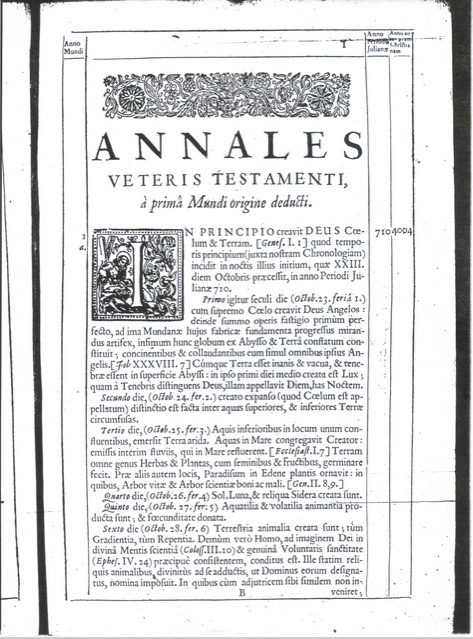
Figure 3. Bishop James Ussher, Annales Veteris Testimenti
f D57 .U87 *, Clark Library Stacks (This image from Wikipedia.)
Title page from Bishop James Ussher’s Annales Veteris Testamenti, 1650. Note the contrasting time scales: Anno mundi on the left, and Julian and Biblical calenders in columns in the right margin. ↩
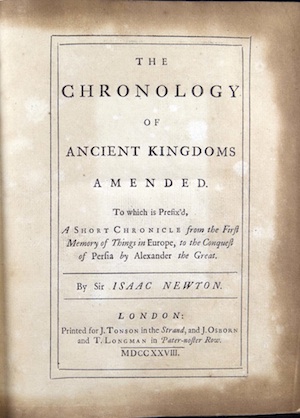
Figure 4a. Sir Isaac Newton, The Chronology of Ancient Kingdoms Amended (London, 1728)
D59 .N48c, YRL Special Collections
Title page for Sir Isaac Newton’s Chronology of Ancient Kingdoms Amended, 1728. ↩
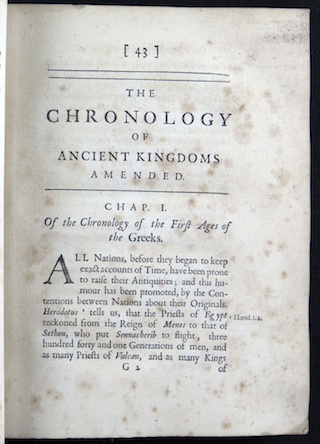
Figure 4b. Introduction and opening to Newton's Chronology of Ancient Kingdoms Amended. ↩
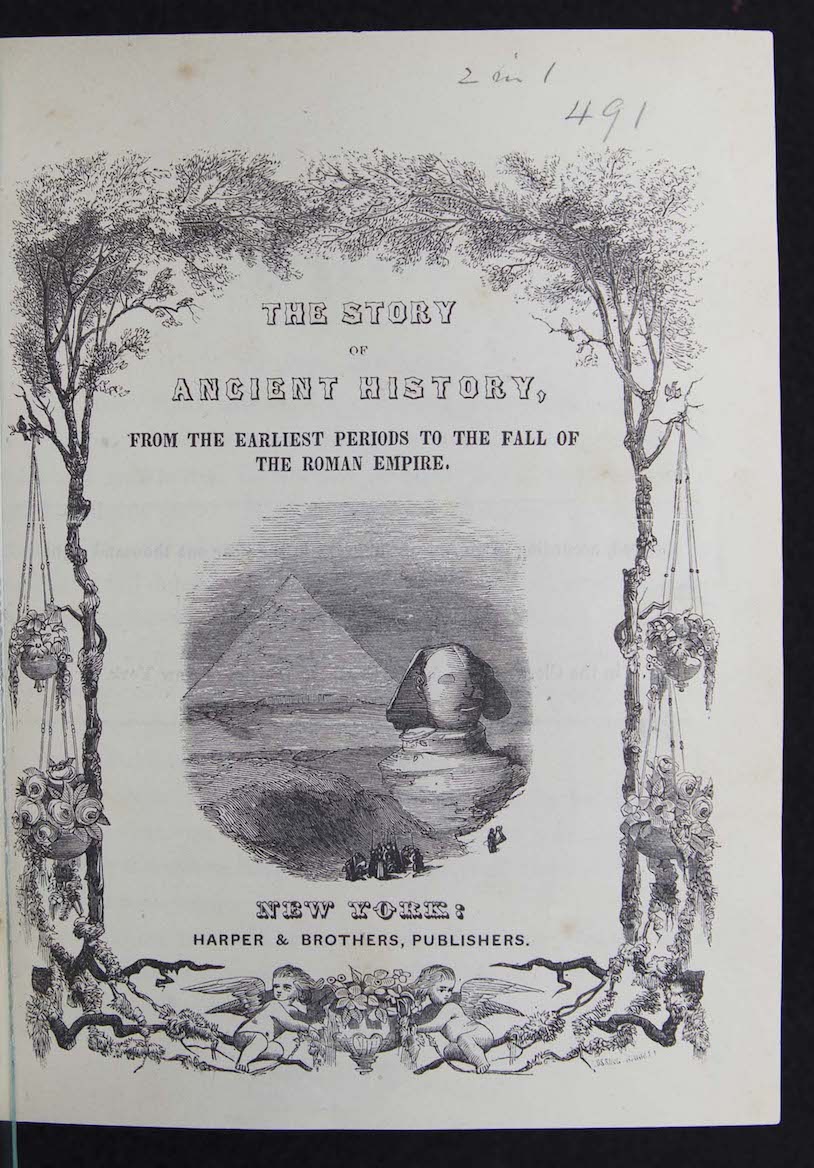
Figure 5. Jacob Abbott, Story of ancient history, from the earliest periods to the fall of the Roman Empire, 1855
CBC PS 1000 .A8ha 1854, YRL Special Collections CBC
Title page and interior from Jack Abbott’s Story of ancient history, 1855. Pages describing ancient history. ↩

Figure 6. Georges Leclerc, Comte de Buffon, Histoire Naturelle, générale et particulière, 1700
Barcode:D0000085175, SRLF, YRL Special Collections
George LeClerc, Comte de Buffon,Histoire Naturelle, 1769. See for page describing the formation of the planets from the sun. ↩
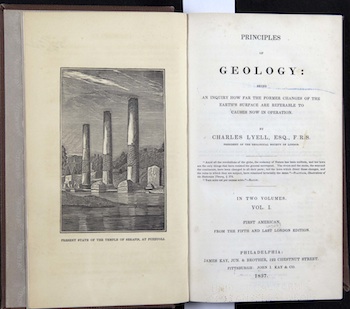
Figure 7. Charles Lyell, Principles of Geology: Being an attempt to explain the former changes of the earth’s surface, by reference to causes now in operation, 1830
QE26.L98p 1830, Biomed History and Special Collections Cage
Being an attempt to explain the former changes of the earth’s surface, by reference to causes now in operation, 1830. Enlarge and see additional pages ↩

Figure 8. Emile Cartailhac, Ages Préhistoriques de l’Espagne at du Portugal,1886
N835 .C24a ↩
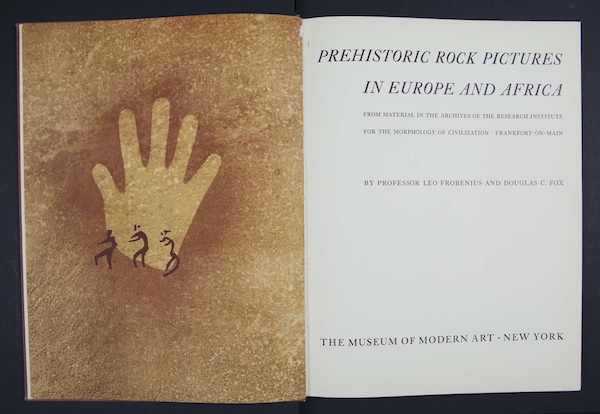
Figure 9. Leo Frobenius and Douglas C. Fox, Prehistoric rock pictures in Europe and Africa
GN799.P4N4 1937 ↩
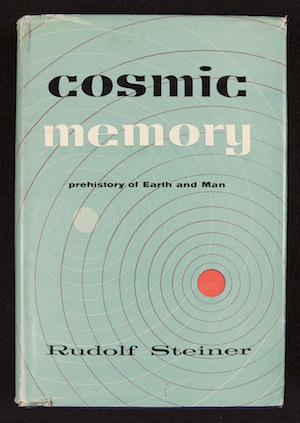
Figure 10. Rudolf Steiner, Cosmic Memory: prehistory of the earth and man
BF 1271.9 S7456aE 1959 ↩
All images are from book in the Charles E. Young Research Library at UCLA, unless otherwise noted.